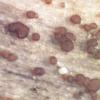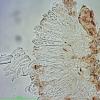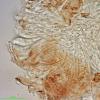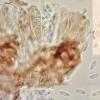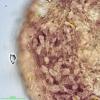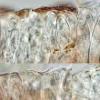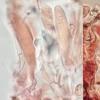
05-06-2022 02:07
Stefan JakobssonOn an old stem of Chamaenerion angustifolium on th

06-06-2022 10:34
Jennifer FiorentinoWhen examining the apothecia of an arthonoid liche

05-06-2022 19:17
 Maria Plekkenpol
Maria Plekkenpol
Hello,On cow dung I found several asco's. One of t

03-06-2022 23:11
Sergey MarkovI found small Lachnum on a stem of Filipendula ulm

03-05-2022 16:17
Hola.Unos diminutos apotecios sobre la superficie

05-06-2022 10:40
 Nicolas VAN VOOREN
Nicolas VAN VOOREN
Dear all,Is there anyone has the following paper:D

04-06-2022 09:30
 Bernard Declercq
Bernard Declercq
Dear all,I am looking for following paper:K. Hanse

04-06-2022 12:23
Mirek GrycHelloI would ask for help in identifying this litt

25-05-2022 13:07
Mirek GrycHello allPerithecia grew on Helianthus tuberosus.
The disks are sessile, 80-200 µm wide, with a darker slightly raised margin. The exciple is covered with a crust covering everything and preventing a view of what is behind. A similar crust is in part also covering the hymenium (pseudoepithecium?). Asci eight-spored, 32-55 × 5.9-7.3 µm, the bases are so agglutinated that I dont't know about croziers, negative in Lugol with and without pretreatment. The spores are 7.0-8.0 × 2.6-2.9 µm, with a few small guttules at each end. The parafyses are slighly clavate, 3.0-4.2 µm at apex and unfortunately so easily dying that I can't say anything about their contents.
I can't find a Micropeziza with such small spores - or is it something else?

But I think I found some living parafyses. They have a not very refractive guttule at the apex. They are very sensitive to pressure - as soon as I touch the cover slip they are mostly gone.
The crust of my fungus is very similar to the the one on photo "Durella, II.2014-2" in the Skyttea folder.

Thank you, I suppose this is as far as it is possible to get with morphology alone.

